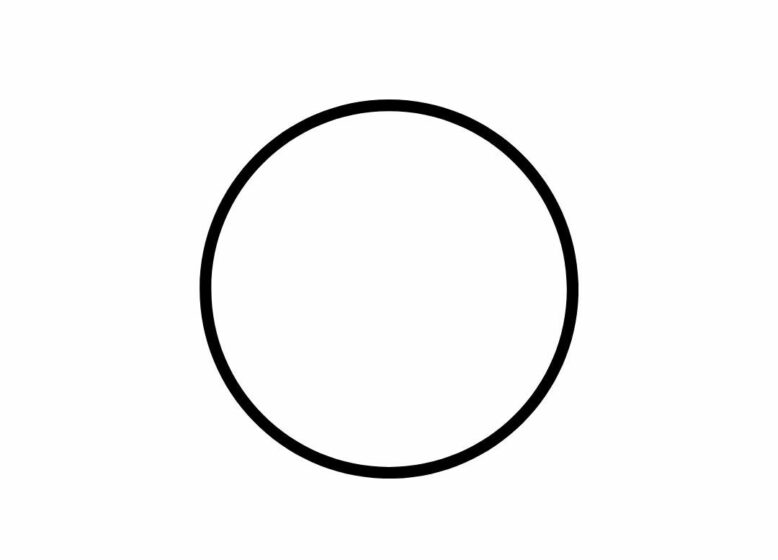Whether ’tis nobler in the mind to choose
At random one tense or the other,
Or to take arms against a sea of grammar
And by mastering it, conquer fluency.
Let’s face it, Italian verb tenses can be utterly bewildering for English speakers, especially when it comes to deciding between imperfetto and passato prossimo. Mangiavo or ho mangiato? Dormivo or ho dormito? Sometimes it may feel like flipping a coin! If you enjoy the thrill of adventure, you may even be hesitant to put an end to this exciting rollercoaster ride, but the mastery of these verb tenses and the feeling of power that comes with it is only a few steps away: let’s grab it!

A line, a circle and a point
Imperfetto and passato prossimo are the past tenses most commonly used in spoken Italian, but how do we choose between the two?
The first step is to visualise the imperfetto as a line and the passato prossimo as a circle.
The line is a visual representation of the notion of duration, the very heart of the imperfetto, while the circle clarifies the nature of passato prossimo: a completed action, coming full circle. So, whenever you want to translate the expression ‘used to (do something)’ into Italian, choose the imperfetto, the line; if, on the other hand, you have only done something once, or a few times, then use the passato prossimo: the circle.
And the point? The passato prossimo can also describe an action that happened at a precise moment in the past: a point.
Imperfetto
In vacanza leggevo sempre un libro sulla spiaggia.

Passato prossimo
Ho letto questo libro sulla spiaggia.

Passato prossimo
Ho letto questo libro l’anno scorso al mare.

The second step is to resist the temptation to always identify the passato prossimo with the present perfect and the imperfetto with the past simple: sometimes there is a clear correspondence with English tenses, sometimes there is not. What is more important is the contrast between duration in the past (imperfetto) and completed action (passato prossimo). The verb systems of the two languages have some elements in common, but they do not overlap completely.
Before going any further, try your hand at these tenses and fill in the gaps with the verbs in brackets. You will find the answer at the end of the article:
- Ieri ____ felice perché _________ la mia amica da Madrid. (essere, arrivare)
- Mentre _______ al computer, la luce ____________ via. (lavorare, andare)
- L’anno scorso ____________ a Roma per due settimane. (stare)
The two souls of the passato prossimo
According to grammar textbooks, the passato prossimo refers to any past action, however distant in time, whose effects are still continuing or that we feel somehow connected to the present: prossimo means near, after all. To talk about actions that do not have any connection with the present we are supposed to use the passato remoto, literally, the distant past.
The truth is that living languages do not always care about textbooks and rules, and in spoken Italian the passato remoto has been almost completely replaced by the passato prossimo, especially in northern and central Italy (with the exception of Tuscany). The opposite is true in southern Italy, particularly in Sicily, where the distant past is used in abundance.
This is why the passato prossimo can translate to both the present perfect and the past simple:
- Hai mai mangiato polenta e funghi a Cortina? — Have you ever eaten polenta and mushrooms in Cortina?
- Ho mangiato polenta e funghi a Cortina l’anno scorso. — I ate polenta and mushrooms in Cortina last year.
- Cristoforo Colombo ha mangiato il mais alla fine del 1400. — Christopher Columbus ate maize in the late 1400s. (In literary Italian this sentence would be in the passato remoto.)
So, a simplified rule is: use the passato prossimo for any completed action in the past, whether near or far.
A photograph of the passato
The third step is to take a photograph of the past using… the imperfetto! Imagine that you want to freeze a moment in the past, you want to describe it to a friend; here you go:
Questa è una fotografia di tanti anni fa: eravamo in vacanza in Sardegna, in un appartamento bellissimo! Era grande, luminoso, aveva un portico e un grande giardino; era quasi in riva al mare. Questo bambino era il figlio dei vicini, si chiamava Giorgio ed era molto simpatico: spesso la sera stavamo in giardino e guardavamo le stelle. Eravamo felici e ci divertivamo molto.
This is a picture from many years ago: here we were on holiday in Sardinia, in a beautiful flat! It was big, bright, it had a porch and a big garden; it was almost by the sea. This child was the neighbours’ son, his name was Giorgio and he was very nice. Often at night we would sit in the garden and look at the stars. We were happy and always had a lot of fun.
Here the English was/were is translated with the imperfetto, because it is a description of a state, a situation in the past: eravamo in vacanza. Then the description, our photograph, goes on, and we describe the appearance of the house and the neighbours’ son: (l’appartamento) era grande, luminoso, aveva un portico e un grande giardino; era quasi in riva al mare. Questo bambino era il figlio dei vicini, si chiamava Giorgio ed era molto simpatico. The story continues with a description of what we used to do on that holiday: Spesso la sera stavamo in giardino e guardavamo le stelle. No good story leaves out emotions, again using the imperfetto: Eravamo felici e ci divertivamo molto.
Let us read on:
Una volta siamo usciti in barca con un pescatore: è stata un’esperienza nuova, un’avventura, anche se noi bambini avevamo un po’ paura quando il pescatore tirava in barca il pesce. Alla fine abbiamo cucinato e mangiato il pesce della giornata. Siamo stati lì per tre settimane, e quando siamo tornati a casa ero triste.
One time we went out on a boat with a fisherman: it was a new experience, an adventure, even though we children were a bit scared when the fisherman pulled the fish into the boat. In the end we cooked and ate the day’s fish. We were there for three weeks, and when we went back home I was sad.
While English uses the past simple throughout the story, notice how Italian alternates between passato prossimo and imperfetto: una volta siamo usciti in barca, one time we went out on a boat. When the past action is completed, has taken place once or only a few times and is not a habit, then the passato prossimo enters the scene, standing out from the background painted by the imperfetto.
The description returns to the imperfetto when we want to describe the feeling we had at that moment: noi bambini avevamo un po’ paura, we children were a bit scared. Here is the interplay between the two tenses again: quando siamo tornati a casa ero triste, when we came home (one time action) I was sad (a feeling in the past).
Finally, the passato prossimo expresses the exact duration of a completed action in the past: Siamo stati lì per tre settimane. The imperfetto can also be used with expressions of definite duration, but only when the action is not seen in its completeness, in its finished aspect, but in its development. This is where our circle (passato prossimo) and our line (imperfetto) can help us:
Da bambino passavo tre settimane al mare con i nonni. — As a child, I used to spend three weeks at the seaside with my grandparents.

Quest’anno sono stato al mare tre settimane con i nonni. — This year I have spent three weeks at the seaside with my grandparents.

When we consider that the imperfetto can be also translated by the English past continuous, the duration aspect of this tense becomes even more obvious:
- Quando mi hai telefonato leggevo un libro. — When you phoned me, I was reading a book.
The past continuous can also be translated with the structure stare + gerund, which emphasises even more that the action was in progress. Here, again, the verb stare is in the imperfetto:
- Quando mi hai telefonato stavo leggendo un libro. — When you phoned me, I was reading a book.
To summarise, the passato prossimo is used to talk about completed actions, while the imperfetto describes habitual actions in the past; the passato prossimo describes actions that happened one after the other, while the imperfetto describes states, situations, feelings, appearances in the past.
Most of the time, we use the passato prossimo to describe a past action whose duration is definite and the imperfetto to describe an action of indefinite duration in the past.
Finally, in English the passato prossimo can correspond to both the present perfect and the past simple, because it is also used for actions that were completed at a certain moment in the past, whether near or far; the imperfetto can correspond to both the form ‘used to’ (or would with the same meaning) and the past continuous.
Remember: a line, a circle, a point.
Now our little exercise at the beginning of this article should hold no more secrets for you:
- Ieri ero felice perché è arrivata la mia amica da Madrid.
- Mentre lavoravo al computer, la luce è andata via.
- L’anno scorso sono stata a Roma per due settimane.

Helpful Links
My Italian Circle’s videos on these tenses:
- Imperfetto o passato prossimo?
- The imperfetto: How to form and use it
- Il passato prossimo: How to form it
- Il passato prossimo: essere o avere?
- Il passato prossimo: How to use it
My Italian Circle is a place where you can go to find engaging new ways to learn Italian, test and improve your listening skills, and maybe even make peace with Italian grammar. We create clear, accurate, authentic content every week on YouTube and Patreon.

Anna is a professional language teacher and Diana is a freelance translator. On their website and YouTube channel My Italian Circle, they create content for Italian learners, especially English speakers. They help with grammar, progression from beginner level, and offer insights into authentic everyday Italian, Italian culture, and lifestyle.


